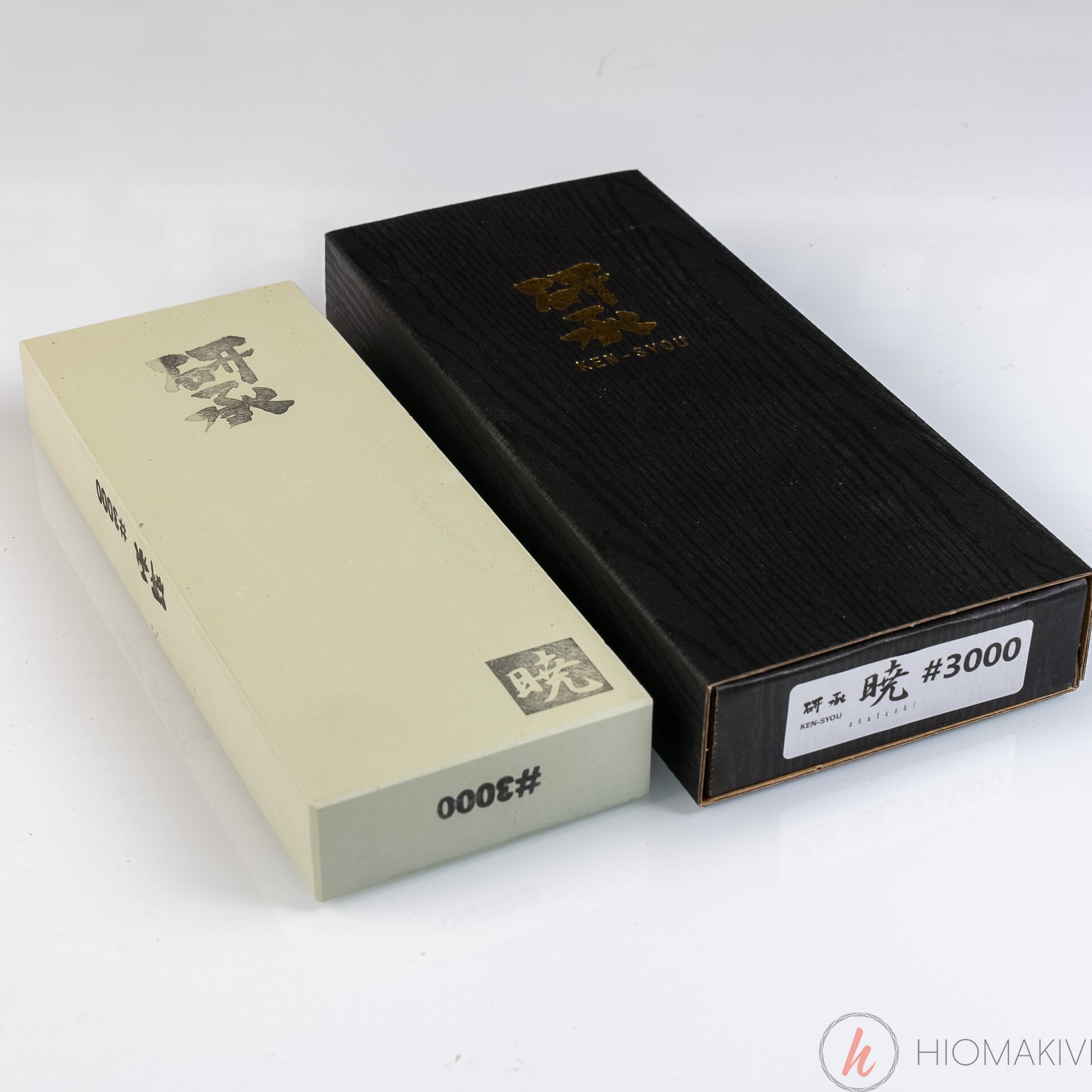
KEN-SYOU Akatsuki #3000
Immediately
Detailed availability
Product description
The stones are entirely handmade by an artisan. The dimensions given may vary somewhat.
Grit: #3000
Long: 205 mm
Wide: 75 mm
Thick: 26 mm
Difference Between KEN-SYOU Akatsuki and Kei Series
Both the Akatsuki and Kei series sharpening stones from KEN-SYOU are made using a resinoid bonding method, but there are important differences in their composition and performance.
1. Structural Difference: Use of Aggregates
The Kei series stones are made using a traditional resinoid process that includes aggregates (骨材: KOTSUZAI). These aggregates make the manufacturing process easier. It was previously believed that aggregates were necessary to harden the stones, but KEN-SYOU has demonstrated that the stones are sufficiently hard even without them.
In contrast, the Akatsuki series stones are made without any aggregates, resulting in a purer composition. This makes the production process more challenging and prone to defects, but KEN-SYOU has successfully solved those production issues.
2. Abrasives: WA and GA
In the Kei series, only the #1000 and #3000 stones are made with a mix of white aluminum oxide (WA) and green silicon carbide (GA). The rest of the grits use only WA.
By contrast, all Akatsuki stones are made with a blend of WA and GA, providing a more consistent and refined abrasive surface.
3. Sharpening Feel and Performance
Because the Akatsuki stones are made without aggregates and use an optimized abrasive mix, they offer a cleaner, sharper finish and a more refined sharpening experience. They are especially well-suited for forged stainless steel knives and overall outperform the Kei series in precision and finish.
NOTE!
"Splash-and-Go" stones do not tolerate prolonged storage in water. Use water only as much as the stone requires. Do not submerge the stones in a water basin. After sharpening, immediately wipe the stone clean with a towel. This keeps the stone looking tidy and initiates the drying process. Place the stone where it does not touch a solid surface. Let the stone dry horizontally, for example, by placing it over a pen. Allow the stone to dry slowly and peacefully without additional heating. Do not expose the stone directly to sunlight, and do not let the stone freeze while damp. The drying process takes more than a day. Store the stone protected from impacts, for example, in its box without the possible original foam padding. Please do not put the stone in a plastic bag while still damp.
Weight
0,85 kg
(with sales package 1 kg)
Country of origin
CommentsAdd a comment
Brand

